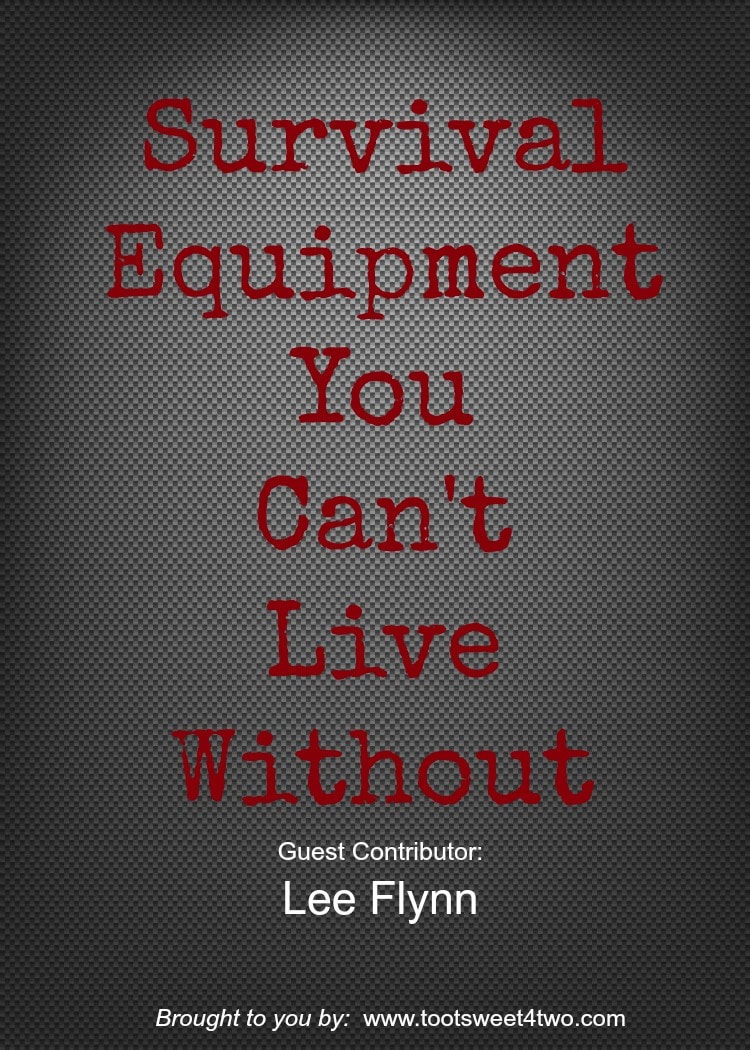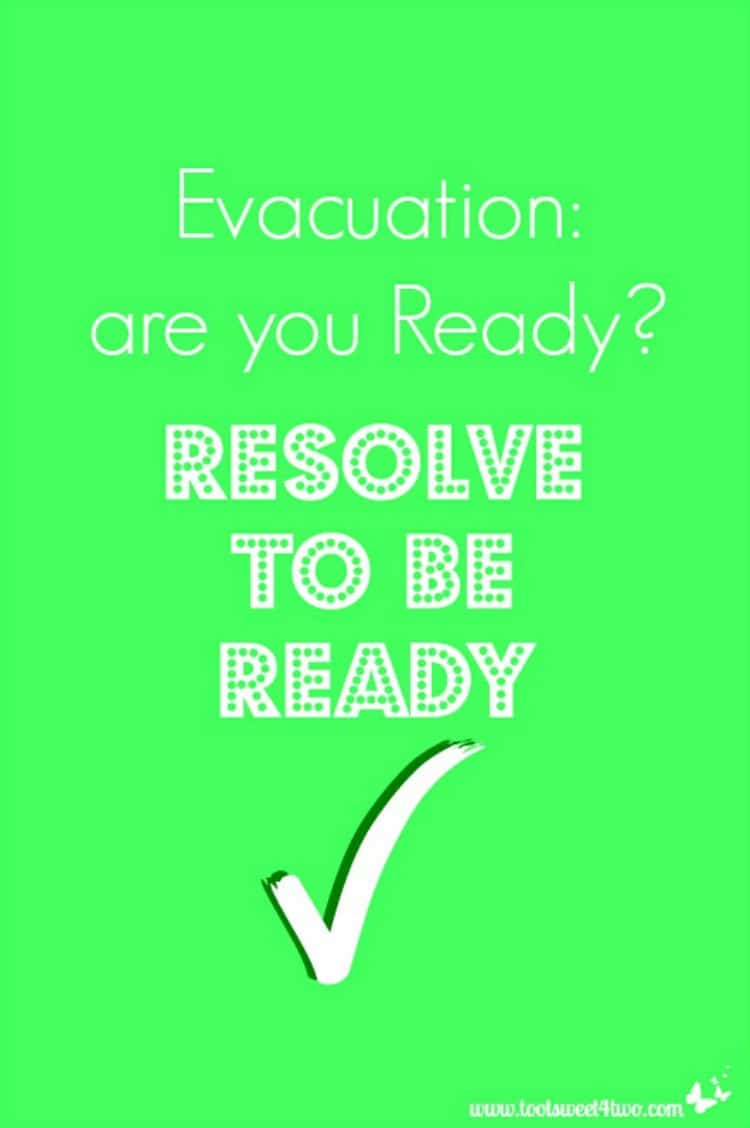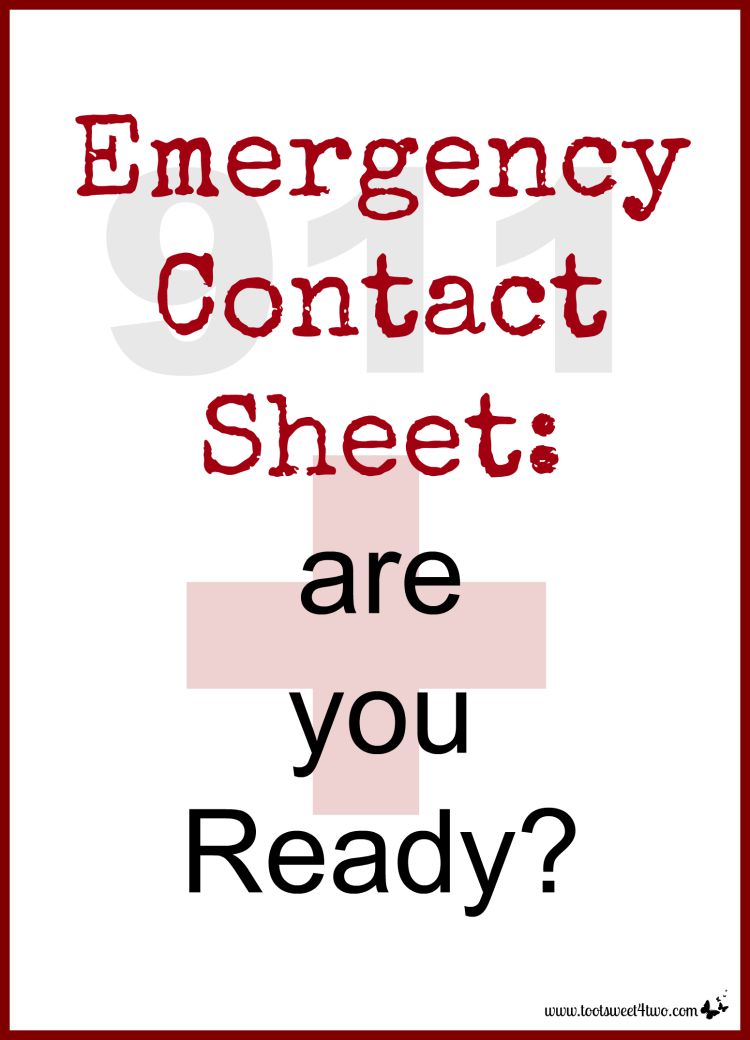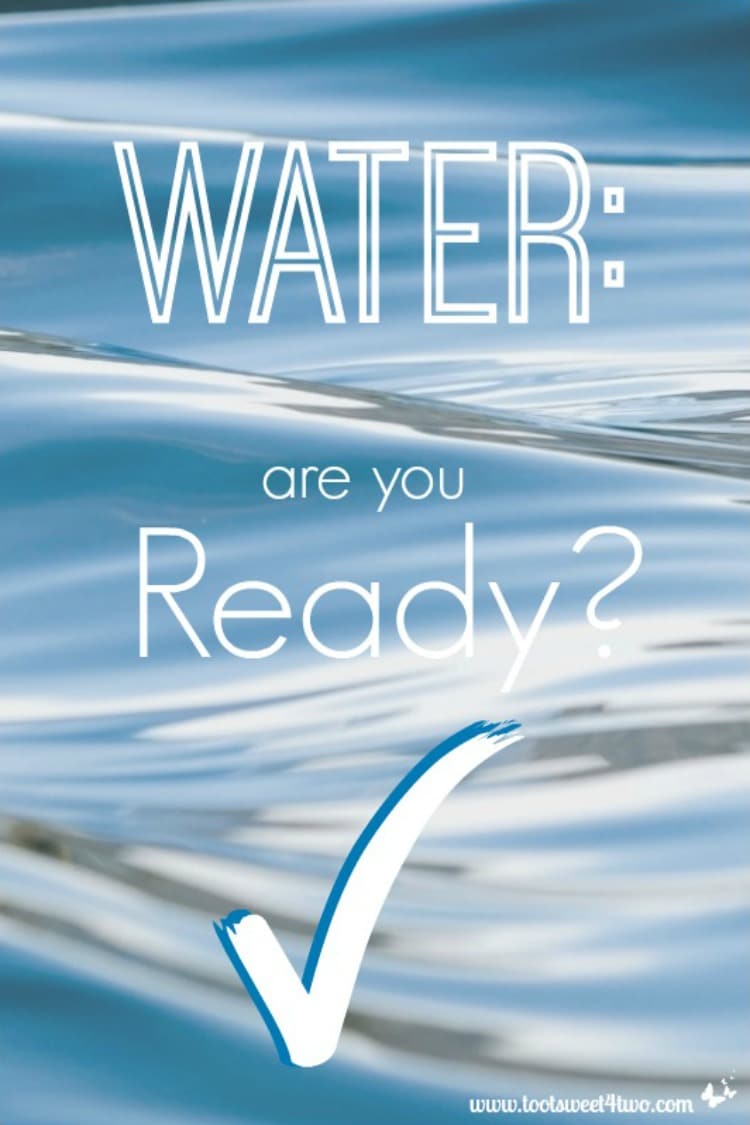Toot Sweet 4 Two has crossed a milestone with today’s post! Today, I welcome my very first guest contributor, Lee Flynn. A freelance writer, Lee has followed my emergency planning and preparedness posts for awhile and is an expert in emergency food preparedness and food storage.
Without further ado, here’s Lee’s post – Survival Equipment You Can’t Live Without.

If you and your family find yourselves in an emergency situation, then it is imperative that you have planned and prepared for the worst. Whether your city is experiencing a 24-hour blackout or even if there is an enormous collapse like the Argentinian Economic Crisis of 2001 or the Fall of the Soviet Union in 1991, these recommendations for survival equipment you can’t live without should keep you fed, safe and ready to take a long trek if necessary.
Cooking and Food
You will want to focus on food that is portable and that can last for a long time. When the power goes out, food storage is the first compromise. At this point fresh food becomes a luxury. As part of your survival equipment plan, you will want to stock up on these staples:
Nutrition bars – chocolate bars, protein bars, Cliff, Balance, and Larabar. You could even make your own with dried fruits, nuts, and protein powders.
Protein powders – nowadays we have the luxury of having tasty options. Go for the weight-gainer varieties which are filled with fat and carbohydrates.
Dried Fruit – apricots, dates, raisins, prunes and many others.
Beef jerky – With so many varieties, you will not be without meat.
Canned food – chili, soups, baked beans, tuna.
Trail Mix – can be rationed for a long time.
Candy – while not the most nutritious, it can be stored indefinitely.
Rice – a 20-pound bag can last you a month.
Condiments – even in survival mode you can still add flavor to your meals.
For some of these foods you will need some cooking equipment as part of your survival equipment:
- Canteen cup and/or flask
- Plastic or metal water bottle
- Portable frying pan setup
- Backpacking stove
Hitting the Road
If there is a crisis that really needs you and your family to be mobile, you will have to be intelligently minimalist. Everything that you will need in the way of survival equipment must fit in a good backpack. Get yourself and your family some high-quality, spacey backpacks and fill them up with these items:
Sleeping bag – You’ll have to get one that is rated for below-freezing temperatures (like -40 Fahrenheit).
Tent – If you are on the road and cannot find a truck stop (or in the event that they become inoperable), you might need to spend the night in the wilderness.
Clothing – One thing to remember: cotton absorbs moisture while polyester, fleece fabric and other synthetic fibers draw moisture away and are therefore preferable if you know it is going to get hot and sticky. Bring jackets and headgear for cold weather, and rain jackets; choose the most lightweight materials possible.
Weapons – knives, machetes, and guns will provide much-needed form of self-defense.
Useful Electronics – smartphone, GPS, weather radios and headphones. Also bring along battery packs and a gas-powered electric generator.
Map – preferably a topographical map
Compass
Compression sacks – for waterproofing your stuff. You might want to keep your clothes in a compression sack when not using them. Besides protecting them from the rain, this will save some space.
Flashlight and head-lamp – don’t think that that tiny light in your smartphone will do the job when it gets pitch-black.
Extra batteries
Hard case – for anything delicate.
So these are the things you will need in the way of survival equipment in a worst-case scenario. Hopefully you will never need to follow any of the advice in this article but it will always come in handy, just in case.
If you haven’t already you might want to invest time and money into learning some survival skills. Have you ever heard of Christopher McCandless? He was the subject of Jon Krakauer’s book ‘Into the Wild.’ This kid went on a long road trip to attempt to survive a winter in Alaska. He died of starvation and dehydration, which he could have completely avoided had he packed a map and some other items outlined in this article; moreover, had he taken the time to learn some vital survival skills.
Don’t be like Christopher McCandless.

Author bio – Lee Flynn is a freelance writer. Through small local workshops and articles, Lee trains and teaches others on home preparation, healthy living, food storage techniques and self reliance. Follow him on twitter @foodstorage101.
Want to read more? Check out these earlier posts about emergency planning and preparedness:


Emergency Contact Sheet: are you Ready?

awesome post! Thank you for sharing